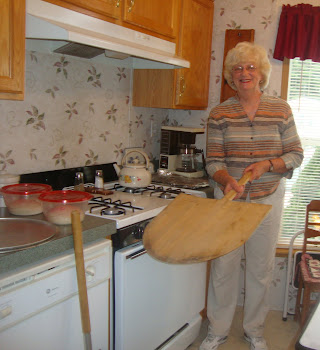I am going to try and explain what the difference is with using ADY (active dry yeast) and IDY (instant dried yeast).
ADY (active dry yeast) should be rehydrated in a small amount of the formula water at a temperature of around 105 degrees F for about 10 minutes. Then it can be added to the rest of the ingredients in the mixer bowl or to the rest of the formula water. The other formula water then should be on the cool side or even cold, all depending if you want to make your dough the same day or let the pizza dough cold ferment. Even if you keep ADY in the refrigerator there shouldn’t be any problems rehydrating the ADY, because the water will be warm.
IDY (instant dry yeast) can be added directly to the flour, as can be the salt. Some people put the IDY on one side of the flour and the salt on the other side of the flour before starting the mixing of the dough. This is the way I usually add the IDY, is to put salt on one side of the flour and IDY on the other side of the flour.
If you let any pizza doughs sit at room temperature too long, you have the possibility of the dough overfermenting if the ambient temperature of your room is too warm, using either ADY or IDY. You have to learn to watch your pizza dough and see how it behaves, or either let the dough sit out right away and only ferment a little and then put the dough into the refrigerator to cold ferment. Pizza doughs should be around 75-85 degrees F, after being mixed.
IDY and ADY are a form of a leavening agent to get the dough to rise. Later on in my post I will post about using dough leavened with a natural yeast, which in my opinion does give different texture to the crust and crumb of a pizza.
Using IDY or ADY above 2% can make a pizza dough taste yeastly in the finished crust.
Fleischmann’s makes both IDY and ADY.
I will post more about using cake yeast and also how to determine how much yeast you might need to add to the pizza dough.
http://www.fleischmannsyeast.com/landing.html
http://www.redstaryeast.com/
If you live in different part of the world, there are many yeasts that can be used for pizza. Some examples are other brands of ADY or IDY, flake yeast and others.
I used Saf yeast (IDY), most of the time for my pizza dough, but have also used ADY, and now am experimenting more with natural starters for making pizza doughs.
I will post more about using cake yeast in later posts.
Norma
This is a blog about my learning knowledge to make pizza. I have been helped by many people on my journey
Welcome...
There are so many variables that go into making a PIZZA. The hydration of the dough, flour, yeast and many more.. Amounts of any kind of yeast in a pizza can make a big difference. Most recipes posted on the web, use too much yeast in their recipes. What I have found out so far, is either bulk fermenting the dough or cold fermenting the dough will give a better flavor in the crust. I am still experimenting to find different flavors in the crust of pies. In my opinion pizza is all about the best flavor you can achieve in a crust. I still am on the journey about flavors in the crust. Even differences in temperatures in you home or times of the year can influence how much yeast to use. If you want a pizza to develop flavors in the crust, there are many ways to go about achieving this.
Adventure in Pizza Making
There are many ways to go about trying to make any kind of pizzas you want to create. PIZZA making is fun and also you get to eat your finished product. I learned to make all my pizza on http://www.pizzamaking.com/forum/index.php
If you look on pizzamaking.com you can see all the beautiful creations of pizzas members make on this site. Members and moderators help members and guests achieve almost any kind of pizzas they want to create. Since joining this site, my pizza making skills have gone from non-existent to something much better. I invite you to take a look at this site.




No comments:
Post a Comment